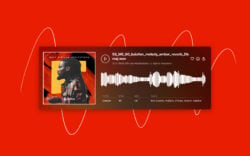The origins of sampling can be traced back to the 1940s, with the French experimental style of musique concrète.
By physically manipulating tape with processes like splicing and looping, innovators such as Beatriz Ferreyra and Pierre Henry opened up new possibilities for how we could arrange sound. Then, Jamaican dub reggae producers such as Lee “Scratch” Perry began incorporating pre-recorded samples into their music in the ’60s, and in the ’80s, the introduction of commercial sampling hardware created the widespread boom of sampling, spearheaded by the likes of DJ Kool Herc, Grandmaster Flash, and Afrika Bambaataa. Soon after, revolutionary artists like J Dilla, DJ Premier, and DJ Shadow pushed sampling to a whole new level—and we fast-forward to today, where tools like Splice Sounds now enable anyone with a computer to explore the world of samples.
In the video above, we go over this brief history of sampling and then dive straight into the three levels of complexity that exist within the process today. While we use FL Studio, Ableton, and Bitwig to demonstrate (along with plugins including XLN Audio’s XO and RC-20 Retro Color), you can use any built-in or third-party tools of your choosing to achieve the techniques covered.
What tips did you find most useful? What sorts of topics in music production would you like to see us explore on our YouTube channel next? Let us know in the comments section of the video.
Incorporate XLN Audio’s XO into your own beat making process:
December 4, 2021

.svg)
.svg)



